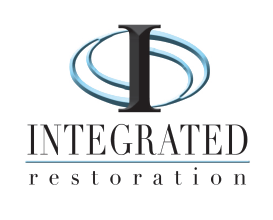What Happens After a Fire? A Step-by-Step Restoration Guide for Cleveland Property Owners
A fire is one of the most stressful events a property owner can experience. And while the flames may be out, the work of recovery is just beginning.
Whether you’re a homeowner or a commercial property manager, what you do in the first 24 hours makes a major difference in the success—and speed—of your restoration.
At Integrated Restoration, we guide Cleveland-area families and businesses through every step of fire damage recovery. This post outlines what to do immediately, how to assess damage, and what you can expect from the professional restoration process.
Step 1: Contact Emergency Services
Even if the fire is small or already extinguished, your first call should be to emergency services.
Firefighters do more than put out flames—they’ll check for flare-ups, hotspots, or gas leaks, and inspect the stability of your home or building. They may also secure the area and give you clearance on when it’s safe to re-enter.
Their inspection helps prevent secondary damage and keeps everyone safe during the early stages of recovery.
Step 2: Perform a Preliminary Damage Assessment (If Safe)
Once the fire department has cleared your property for entry, you can begin a personal walk-through to document visible damage. This helps you:
Create a record for your insurance claim
Identify areas that need urgent attention
Understand what may require professional help
Start outside. Look for:
Roof or wall collapse
Broken windows or doors
Hanging power lines or water pooling around the foundation
Then move indoors—carefully:
Avoid areas that appear unstable
Look for soot-stained ceilings, charred walls, warped flooring
Take photos and video of every affected room
Note any personal belongings, appliances, or equipment that have been damaged
IMPORTANT: If you smell gas or see signs of electrical damage (sparking, burned outlets), leave the property and call for assistance.
Step 3: Call a Fire Damage Restoration Professional
Even if things look okay on the surface, fire, smoke, and water damage often go deeper. Professionals know what to look for and how to restore things safely.
At Integrated Restoration, we respond quickly with:
24/7 emergency service
Full damage assessments (including smoke, soot, water, and structural)
A clear plan for cleaning, restoring, and rebuilding
Want to know what the process looks like? Let’s walk through it.
What the Fire Damage Restoration Process Looks Like
1. Full Damage Assessment
We inspect everything—roof to basement—to determine the scope of fire, smoke, and water damage.
2. Water Extraction & Drying
Water from fire suppression can soak floors, insulation, and walls. We use industrial dryers, dehumidifiers, and HEPA filtration to dry everything safely and prevent mold.
3. Soot & Smoke Cleanup
We clean all affected surfaces (including HVAC systems) and use specialized tools to remove toxic residues and odors.
4. Debris Removal & Sanitization
We dispose of unsalvageable materials, disinfect surfaces, and prepare the space for rebuilding.
5. Rebuild & Restoration
We restore structural elements like walls, ceilings, siding, and roofing—and coordinate full reconstruction where needed.
Navigating Insurance After a Fire
The insurance process can be overwhelming—but we’re here to make it easier.
Integrated Restoration helps you:
Document damages with photos and detailed notes
Provide itemized estimates for insurance
Communicate directly with adjusters when needed
Keep track of paperwork and approvals
Advocate for a fair and timely resolution
We’ve worked with all major carriers and know how to keep the claims process moving. Reach out to us today to learn more.
Understanding the Types of Fire Damage
Fires don’t just leave behind charred wood and blackened walls. Here are some of the most common types of damage we see:
Primary fire damage: caused by the flames (burned materials, structural charring)
Secondary damage: smoke, soot, water, and chemical residue
Heat damage: warping, cracking, and structural weakening
Electrical damage: melted wires, outlet corrosion, or blown circuits
Odor infiltration: smoke particles trapped in soft surfaces, HVAC systems, and insulation
The longer these issues sit, the harder (and more expensive) they are to fix.
DIY vs. Professional Help: What You Need to Know
While it’s natural to want to jump into cleanup mode, fire restoration is complex—and can be dangerous without the right gear or training.
Professionals bring:
PPE and air scrubbers for safe air quality
Moisture meters and thermal cameras to detect hidden water
Knowledge of building codes, safety protocols, and insurance requirements
Reconstruction capabilities that go beyond basic cleanup
Your property’s structure—and your health—depend on doing it right the first time.
Recovery Takes Time—But You’re Not Alone
A fire is life-altering. But with the right team, recovery doesn’t have to be overwhelming.
Integrated Restoration is a Cleveland-based, full-service restoration company. We help homeowners, facility managers, and business owners take the next step with confidence—from emergency response to complete rebuild.

